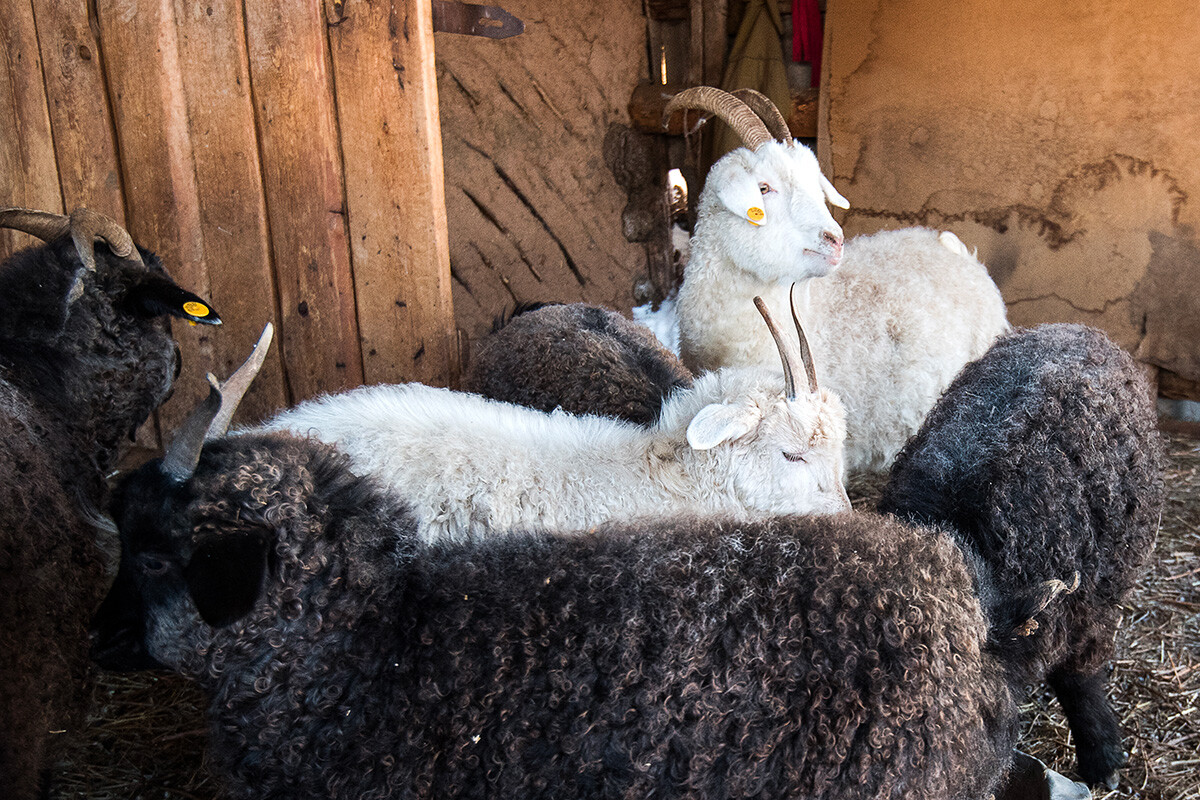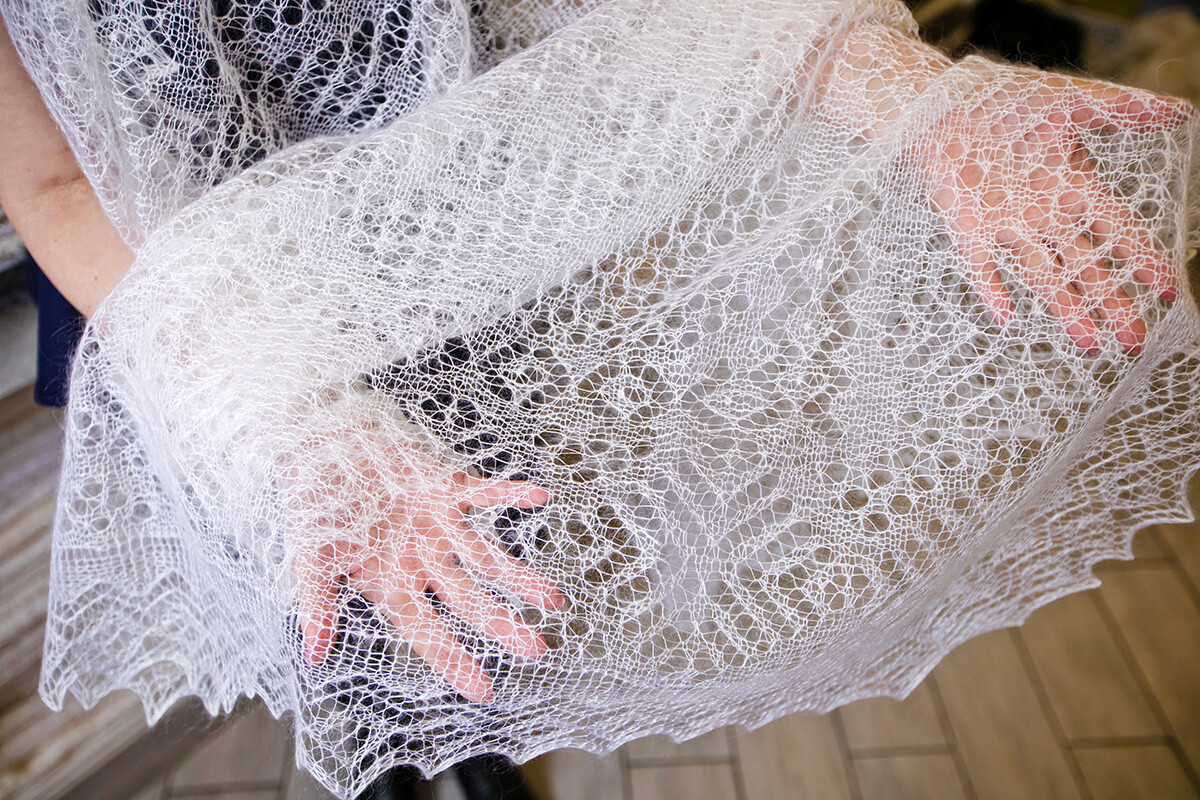Orenburg goats & shawls: 5 facts about this UNIQUE downy goat breed

Orenburg shawls are almost weightless, but they provide warmth even in the harshest of colds. The secret is in the special breed of goats, bred only in the South Urals.
1. Orenburg downy goats are the largest in the world

Orenburg goats, the wool of which locals have been making very warm clothes, caught the interest of Russian scientists back in the middle of the 18th century. South Ural local historian Pyotr Rychkov was the first to research this phenomenon. And it was he and his spouse who facilitated the spread of the craft of sewing Orenburg shawls in Russia and beyond.
Then, the breeder work began: Ural goats were crossbred with other downy breeds, particularly with cashmere goats that came to the Urals from Central Asia, as well as Don goats from Southern Russia.
By the 19th century, the world gained interest in everything Russian, especially in folk crafts; to sew shawls in large quantities for export, more raw material was required – the fiber.
The crossbreeding resulted in not just better downy, but also heavier goats. A female, on average, weighs around 55 kg, while a male can weigh up to 90 kg. They are considered the largest downy goats in the world (second place is also occupied by Don goats, another breed of goats from Russia, weighing up to 45 kg and 75 kg, respectively).
The breed itself was only officially included in the State Registry in 1993.
2. They can only live in the South Urals
 The monument in the village of Tatarsky Saraktash.
The monument in the village of Tatarsky Saraktash.
The climate of the South Urals is harsh and continental, with -40°C cold in winter and +40°C heat in summer. During winter, there are often strong winds, blizzards and wet snow; while, in summer, the dreaded drought often comes.
The weather can change several times a day and this has made these goats tough. They graze on natural pastures and even sleep outside. The local goats have adapted to these weather conditions by growing a warm and thin undercoat before the cold season.
Orenburg shawls made of goat wool were presented at international exhibitions overseas multiple times. They were decorated with medals in 1862 in London, 1897 in Chicago, 1958 in Brussels. Back in the 19th century, foreign merchants took an interest in this goat breed. They tried to breed them in France, England, Holland and Australia. Unfortunately, after 2-3 years, they simply stopped growing their special undercoat.
Basically, Orenburg goats got so used to living in the South Urals that you won’t see them in any other region.
3. Fiber changes with age

The goats are usually brushed twice with a 2-3-week break in between. They are brushed for the first time at the end of February; the remaining wool is then collected in the middle of March. As such, one adult goat can produce 0.4-0.5 kg of wool (up to 0.6 kg from large male goats) per season.
Young females have the thinnest hair, but it’s also the shortest. As they mature, their undercoat grows thicker and longer.
A goat’s coat can also be cut in April-May, so it’s not as hot for it during summer.
Although Orenburg shawls are usually white, the majority of goats of this breed are black. There are also white, ginger, gray and motley goats. The yarn, of course, is simply dyed.
However, there’s no point in keeping Orenburg goats for their milk. They produce less than 100 liters of milk per year, while dedicated milk goat breeds produce about 1,000 liters per year.
4. It’s better not to use pure fiber
 A shawl in the Orenburgskiye Pukhovnitsy store.
A shawl in the Orenburgskiye Pukhovnitsy store.
On its own, Orenburg goat wool forms threads well. But, to make a shawl out of it, viscose silk or cotton thread is added to the yarn. The fiber content should be no less than 60%, or better, no less than 70%.
Handicraft shops sell skeins of yarn out of pure goat wool, but, it’s assumed that, when knitting, a craftsman will add other threads in required proportions by themselves.
That’s necessary for a product to hold its shape and serve longer. Aside from that, it’s physically hard to sew a shawl out of pure goat wool fiber.
5. These goats were once on the verge of extinction
 A farm in the Orenburg Region, USSR, 1990.
A farm in the Orenburg Region, USSR, 1990.
Traditionally, these goats are bred in the Orenburg and Chelyabinsk regions, Bashkiria, as well as in several regions of Kazakhstan. During Soviet times, six ‘sovkhozes’ (state-owned farms) were engaged in breeding these goats; the wool was then spun by master craftsmen at an Orenburg combine. But, during the USSR’s collapse, financial support was cut for the Orenburg goats.
If, at the beginning of the 1990s, the livestock numbered at 185,000 goats, currently, it’s only about 50,000. The unique gene pool was preserved by local breeders, both in Soviet ‘sovkhozes’ and by private breeders, who continued to keep goats.
Today, Ural farms that breed these goats receive state grants.


